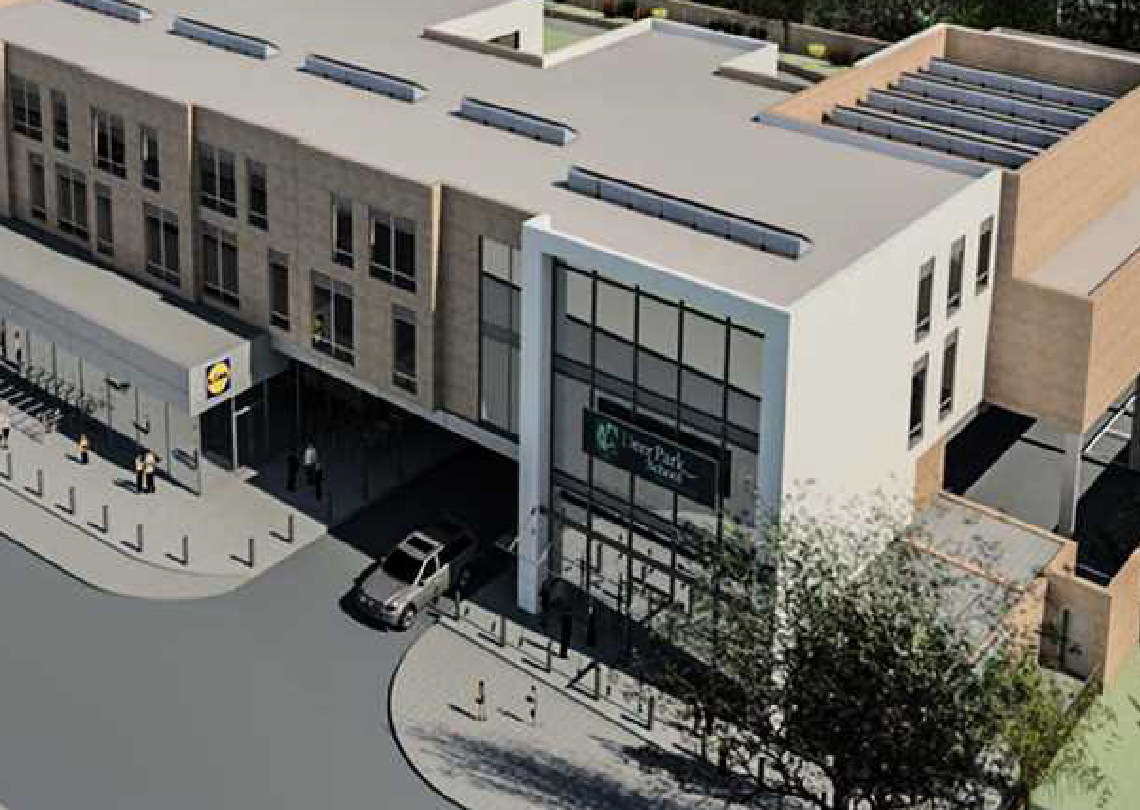LIDL is building Communities, not just stores

Last year, Lidl announced its bold plans to build more than 3,000 homes and a primary school in the heart of Twickenham, London. This isn’t the first time that a supermarket chain has delved into residential – Tesco built hundreds of homes above its stores in Woolwich, south-east London, and Streatham, south-west London, while Sainsbury’s was part of a joint scheme with Barratt Homes involving 700 homes in Nine Elms, near Vauxhall, south-west London, and recently won permission for a project in Redbridge, east London, involving 683 homes. Morrisons won permission late last year for a plan to build nearly 600 homes as part of the redevelopment of its Camden store in north London.
But what’s driving this community level investment from supermarkets?
For many, it is becoming increasingly challenging for stores to obtain planning permission and subsequently what has materialised is an exploration in community development from supermarkets, and it makes a lot of sense from several stakeholder perspectives. The supermarkets build apartments and homes in the direct vicinity of their store, almost guaranteeing customers; the local council sees a direct investment into the community, with new tax payers, more resources, more jobs, and more homes while new schools help ease the mounting pressures of new residential builds on existing schools.
Such a strategy also enables them to offset the costs of opening a store in an expensive location, such as London and further afield in the south east of the England.
These initiatives show that physical retail is showing no signs of slowing down, the opposite in fact; on demand retail is increasing and being accessible and local is key.
It would be easy to believe that these kinds of initiatives are more likely to come from companies that are situated towards the premium side of retail, especially as price penetration isn’t a key factor in their business models. However, the reality is that even for discount retailers, whose main selling proposition is competitive pricing, realise that in today’s market, strategies to grow must come from different types of initiatives. Embedding and integrating themselves as part of the community, not just opening a store there, gives people a sense of trust and loyalty within a brand.
In addition to housing, Lidl is also building a new school as part of their new store plan on Richmond Road. It’s a smart idea: it not only serves a social purpose which makes people feel good about Lidl, but it also puts a store in the middle of customers’ day-to-day lives, and twice a day, parents will be passing the door to drop off or collect their children.
Things are changing. In many parts of the world a Retail Revolution is happening, and brands are scrambling to find new ways to stand out from their competition. Becoming part of the community is an intuitive way to not only secure customer footfall but perhaps more importantly, it also creates a sense of loyalty and trust.
One of the best examples of Community Engagement is the story of Whole Foods, when the worst flood of the last century devastated Austin, Texas. Caught in the flood waters, the store's inventory was wiped out and most of the equipment was damaged. Losses reached around $400,000 and Whole Foods Market was not covered for such an event, nor did the owners have enough savings to face the crisis alone. What happened next?
Customers and neighbours joined staff voluntarily to clean up and repair the damage caused by the flood waters. Creditors, vendors and investors all provided breathing room for the store to get back on its feet and it re-opened a mere 28 days after the flood. A prime example in the importance of community. Employees, customers, suppliers, investors and bankers all believed enough in the mission of Whole Foods to chip in and help and not let the store, and their community, suffer.
Retail is evolving, if you’re interested in learning more about the changes and challenges happening in the industry, you can read more below:
From Clicks to Bricks – The Future of Physical Retailers
If we’re in the digital age, why is Amazon getting physical?